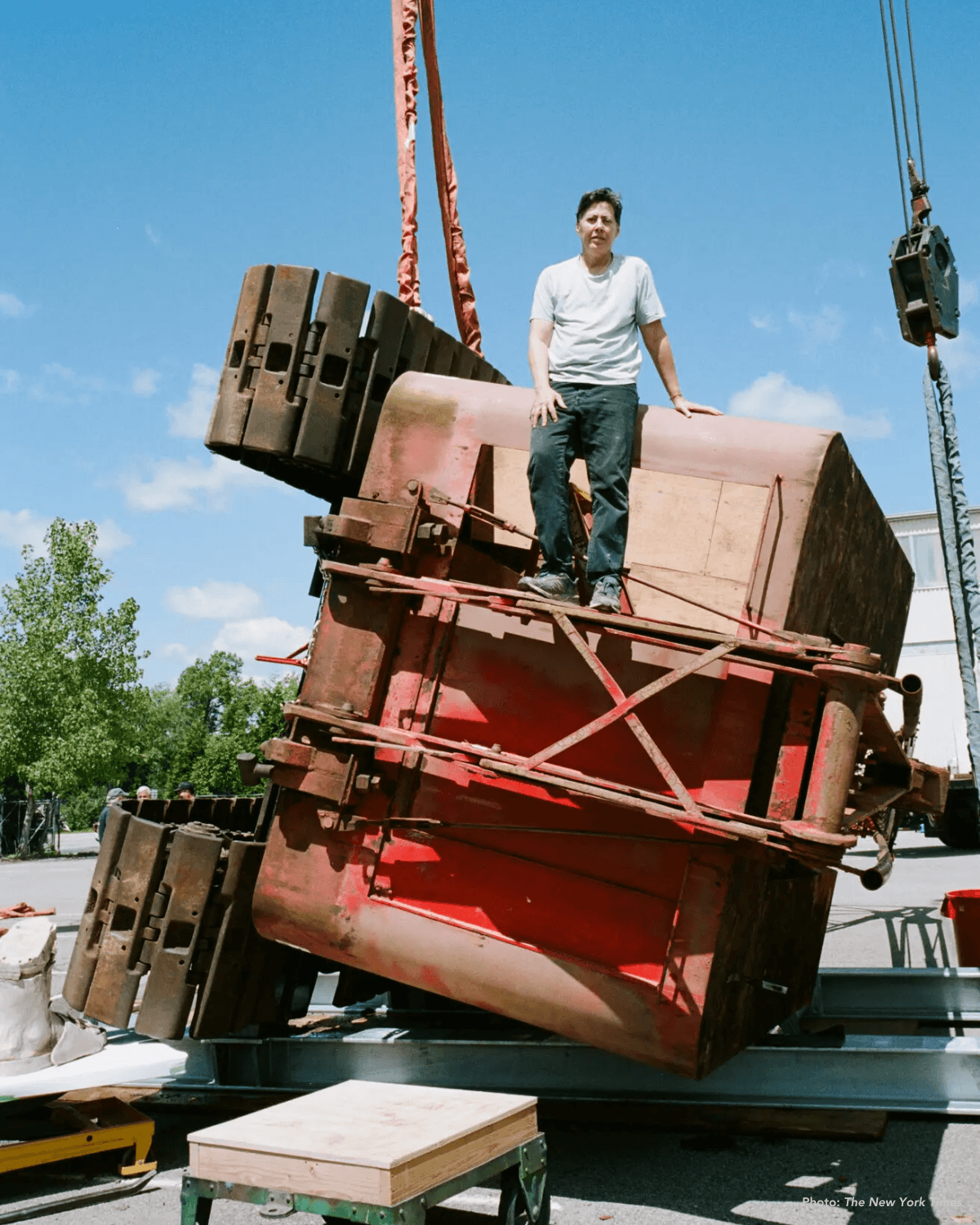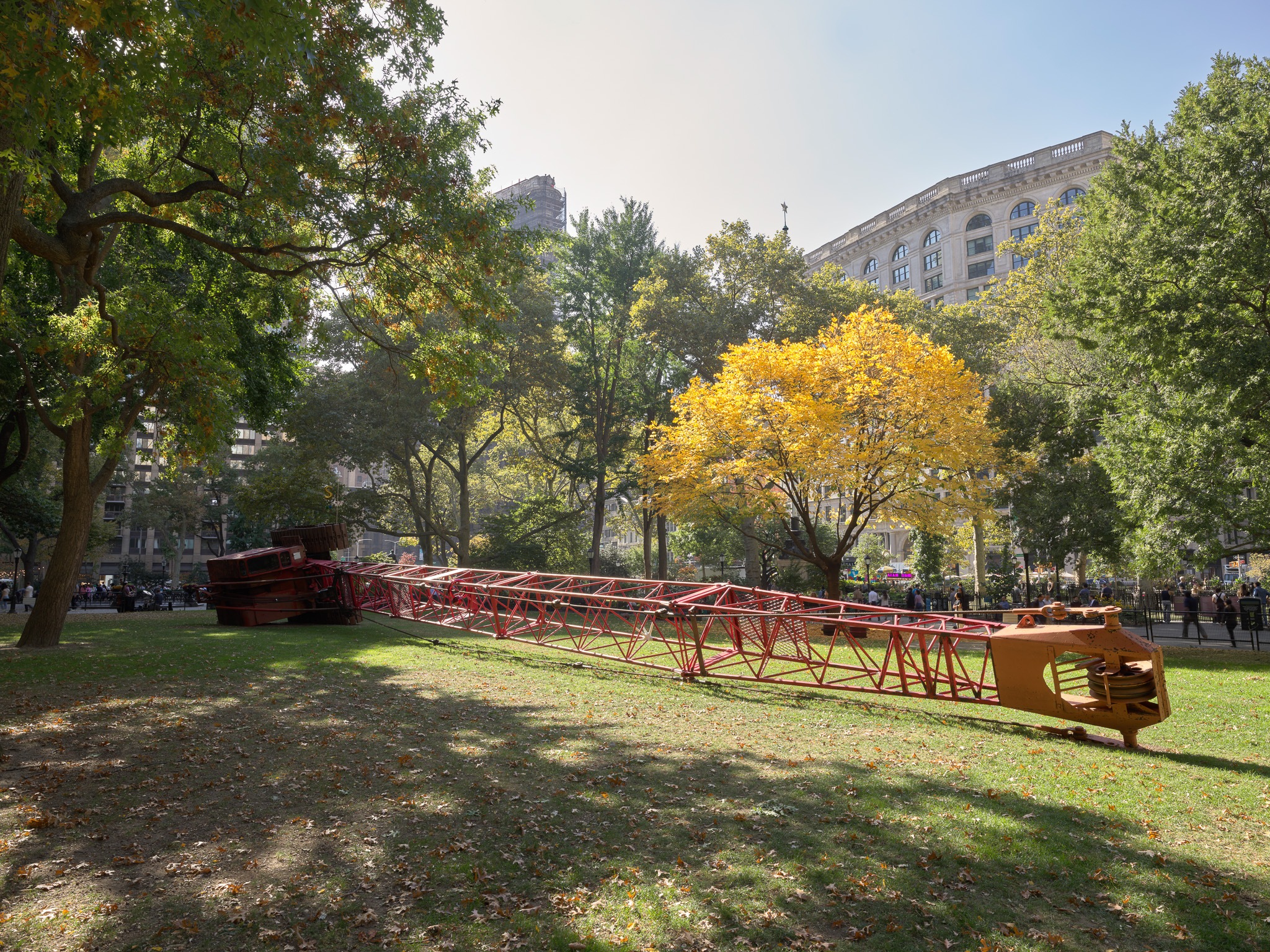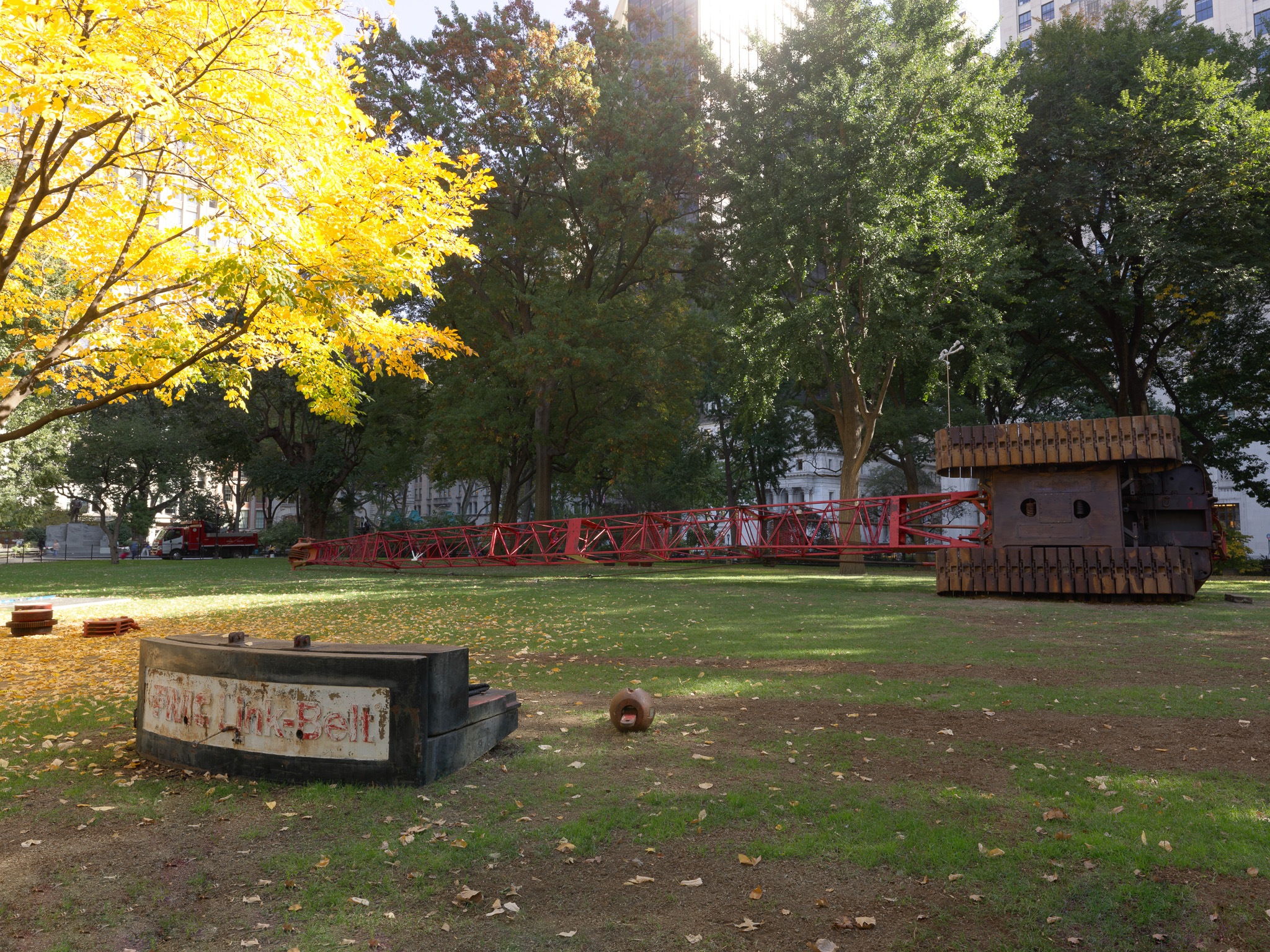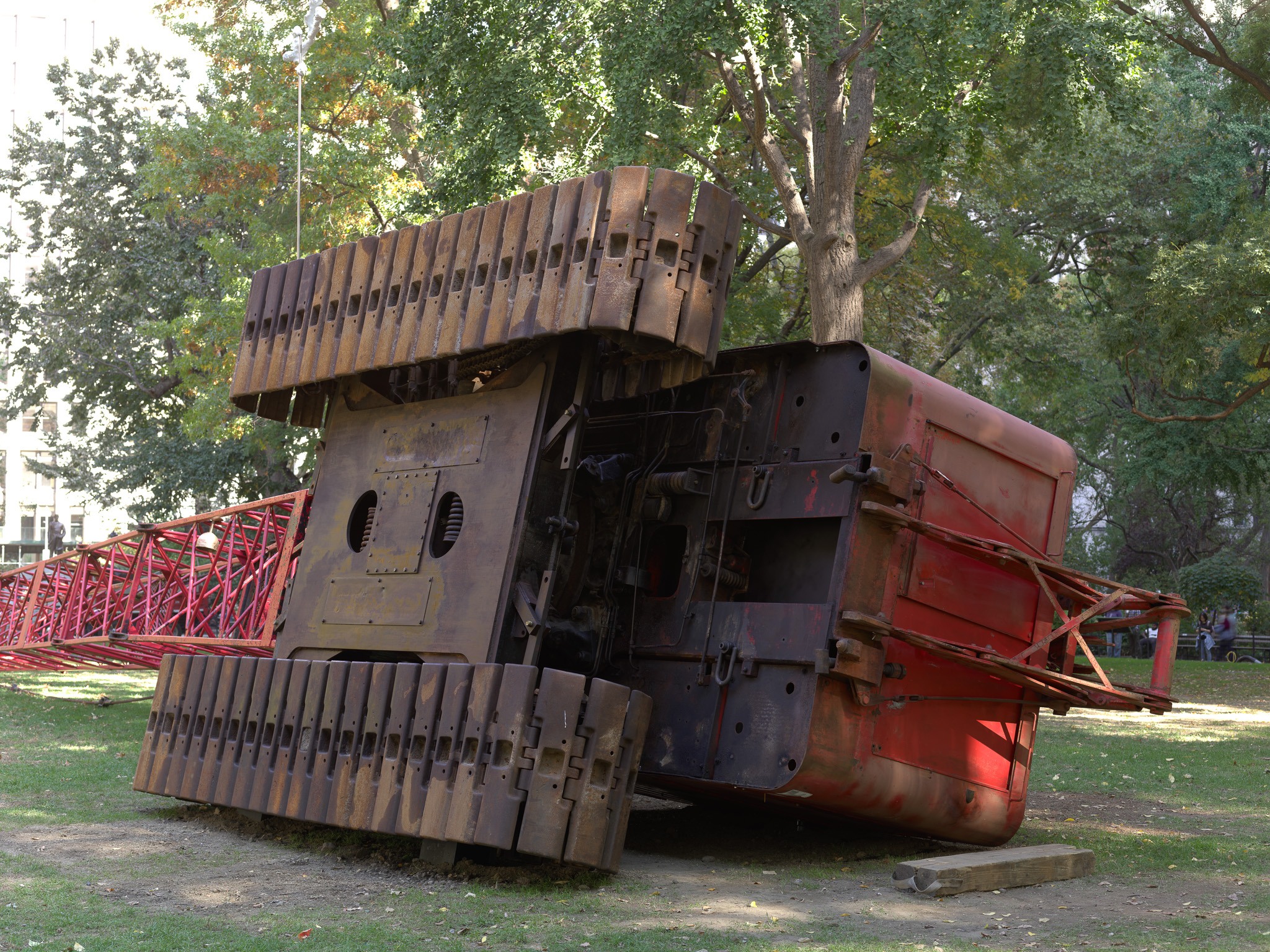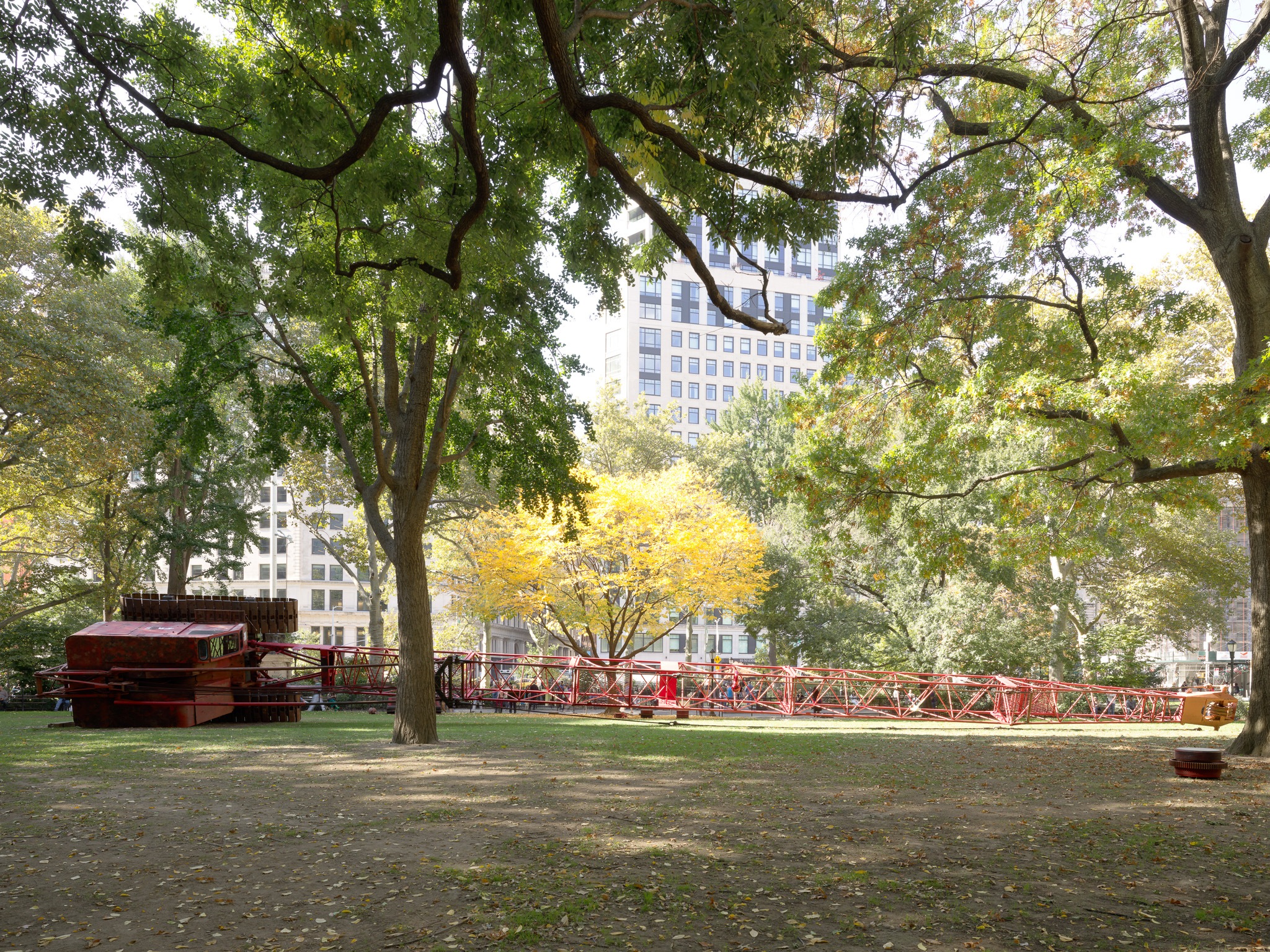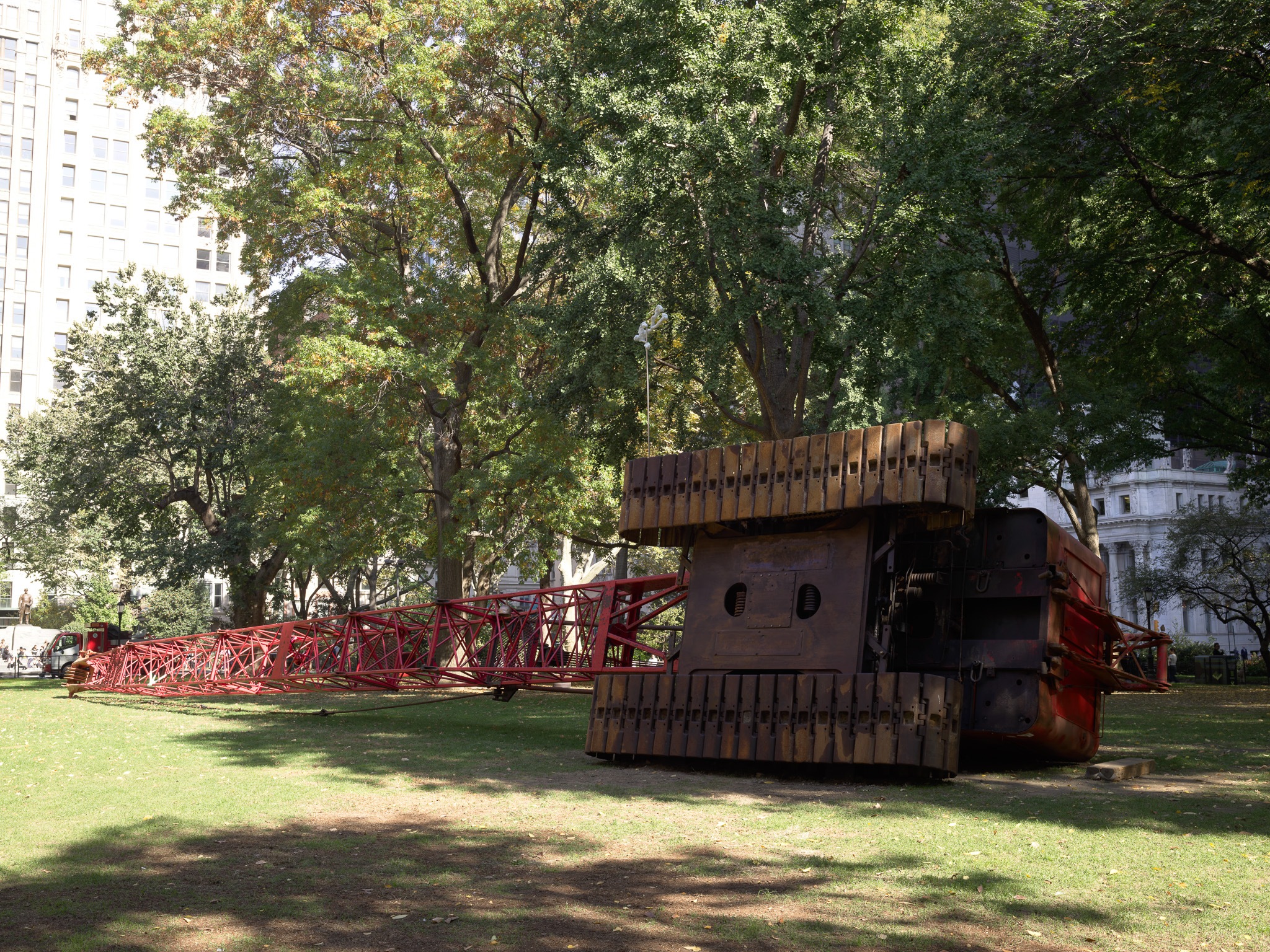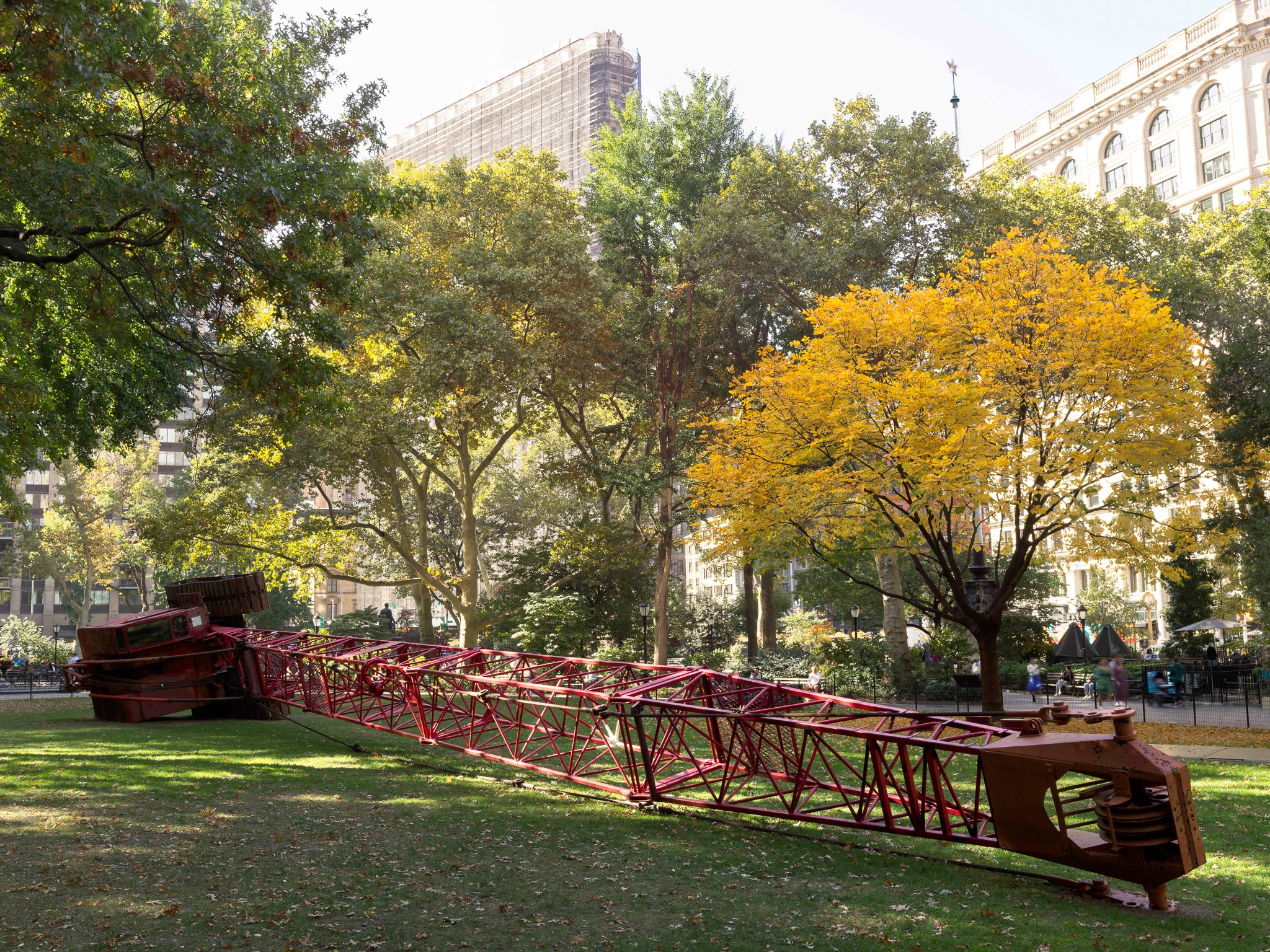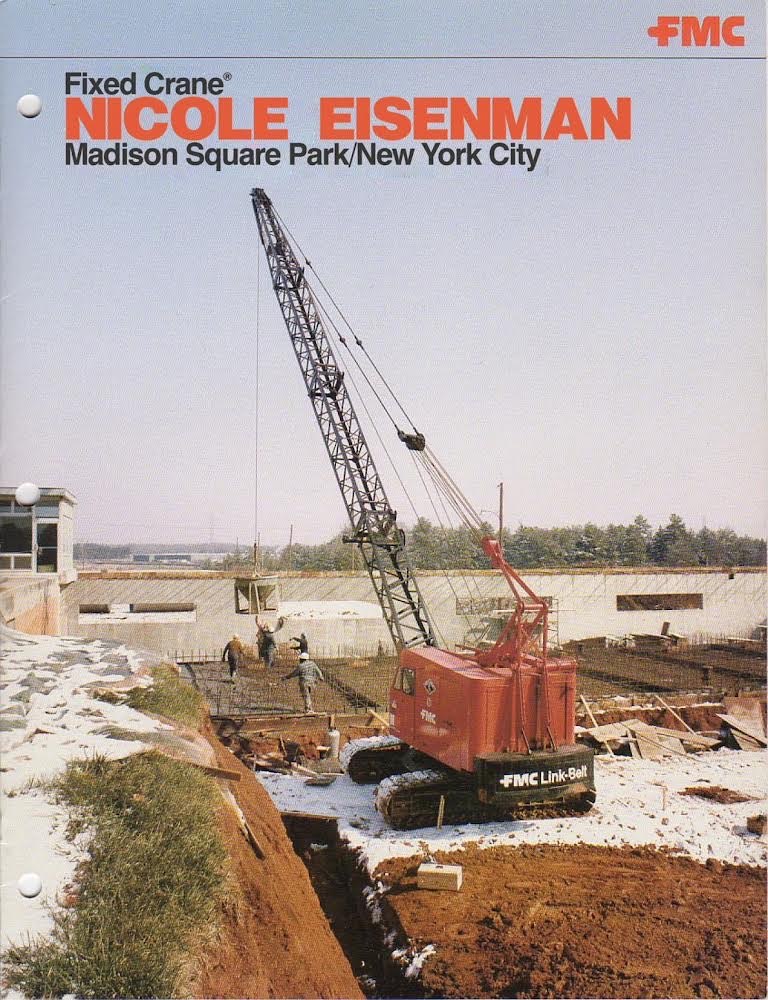This site uses cookies – Learn more.
Nicole Eisenman: “Fixed Crane”
Nicole Eisenman: “Fixed Crane”
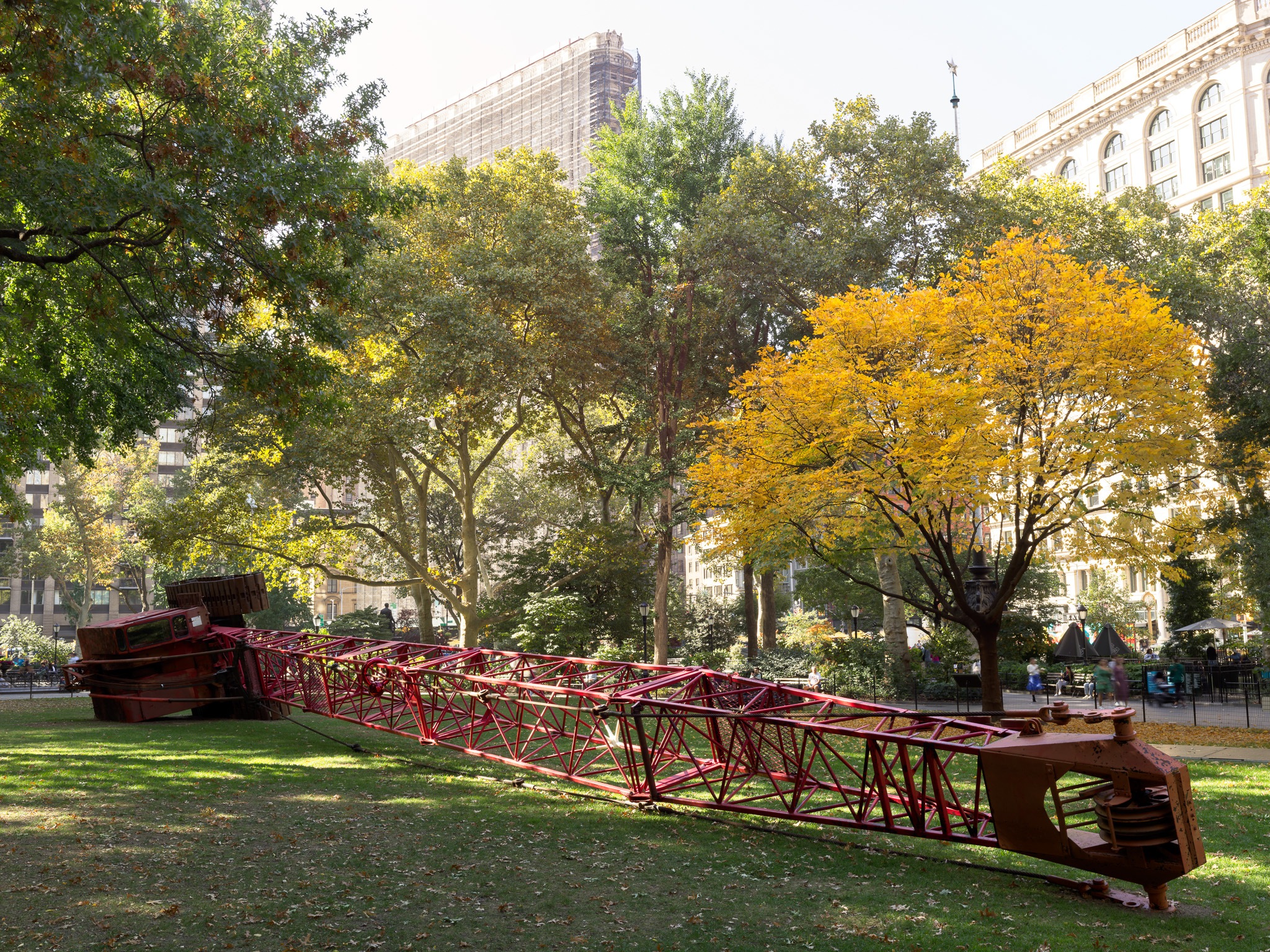
Nicole Eisenman – one of the most influential artists working today — assembles a monumental public project for Madison Square Park that destabilizes familiar heroic objects associated with human achievement. Fixed Crane features a toppled industrial crane embellished with handmade sculptural objects. The work marks a significant moment in Eisenman’s practice, expanding her explorations of the twentieth-century concept of the “readymade,” created in 1916 by Dada artist Marcel Duchamp to elevate everyday, mass-produced objects to the status of an artwork, and pushing the boundaries of her work in figuration. The project is part of the milestone twentieth anniversary of Madison Square Park Conservancy’s art program.
Parkgoers can walk around the deflated machine, a mighty symbol of construction prowess and urban growth that now rests impotently on the park’s Oval Lawn. Rather than reach valiantly into the sky, the once imperious 1969 Link-Belt crane has capsized, provocatively challenging our notions of betterment. Turned on its side, the operator’s cab reaches nine-feet high; the tracks extend up twelve feet, and the boom stretches ninety feet. The artist upends an Edenic refuge from the city by placing a rusted relic of presumed advancement center stage. Eisenman questions cycles of progress in public space: how powerful cranes build skyscrapers–and, lately, “supertalls”–like those near Madison Square Park. In recent months, a towering wisp of an 860-foot-high structure has risen to eclipse views of the Empire State Building from in and around the park. Eisenman critiques New York City’s impulse for ever higher ascension, which advances some lives and compromises others, and alludes to how the human condition may be endangered by ongoing urban construction.
At the apex of the cab is a diminutive explorer. The figure is a symbol of surrender or of occupation. Sculptural bandages placed on the crane’s boom are there to heal the fallen apparatus. A large foot wearing a Birkenstock sandal adjacent to the engine, is footloose no longer, an unexpected culprit as the kicker who capsized the crane. Visible through a small portal is a tableau of a solitary seated female figure, draped in a shawl, and bathed in the soft light of a chandelier. She sits before a small cast-iron stove. She is now a vision (or a squatter), a glowing soul who recently found a haven for a wiener roast, skewering a sausage with a stick. The crane’s original counterweight and interior mechanisms become benches for seating as the artist daylights what was once hidden in the machine’s interior. Viewers can look at the fallen crane–once a commanding, necessary force for building, but now in stasis.
Read more about Fixed Crane in the press:
ARTIST
Nicole Eisenman (b. 1965, Verdun, France; lives and works in Brooklyn) is known for her inventive and complex paintings and sculpture. Over the past decade, in addition to creating paintings with a spectacular presence and influence, she has become among the most significant artists working in sculpture. She often engages with the figure in unexpectedly grim or humorous scenes. In her project for Madison Square Park, the figure’s stature is small-scale and understated compared with the pure physicality of a recumbent crane.
Eisenman was named a MacArthur Foundation Fellow (2015), won the Carnegie Prize (2013), and received a Guggenheim Fellowship (1996). She was inducted into the American Academy of Arts and Letters (2018). Her work has been included in three Biennials at the Whitney Museum of American Art in New York (1995, 2012, 2019) and was featured in the Venice Biennale’s main exhibition (2019). An important survey of her work opened at the Museum Brandhorst, Munich, Germany and traveled to the Whitechapel Gallery, London, and the Museum of Contemporary Art, Chicago (2023, 2024). She has had recent solo exhibitions at the Astrup Fearnley Museum of Modern Art, Oslo, Norway; the Fondation Vincent van Gogh, Arles, France; Kunsthalle Bielefeld, Germany; Kunstmuseum Den Haag, Netherlands; and the New Museum, New York.
MADISON SQUARE PARK CONSERVANCY
Since 2004, Madison Square Park Conservancy has commissioned and presented premier projects by visionary artists ranging in practice and media. This year, the art program celebrates its twentieth anniversary with innovative exhibitions, a comprehensive publication, scholarly and exultant programs, and outreach to new communities.
Madison Square Park Conservancy is responsible for raising 100 percent of the funds necessary to operate the park, including its dynamic public art program, vibrant horticulture, maintenance, sanitation, security, and free cultural programs for park visitors.


